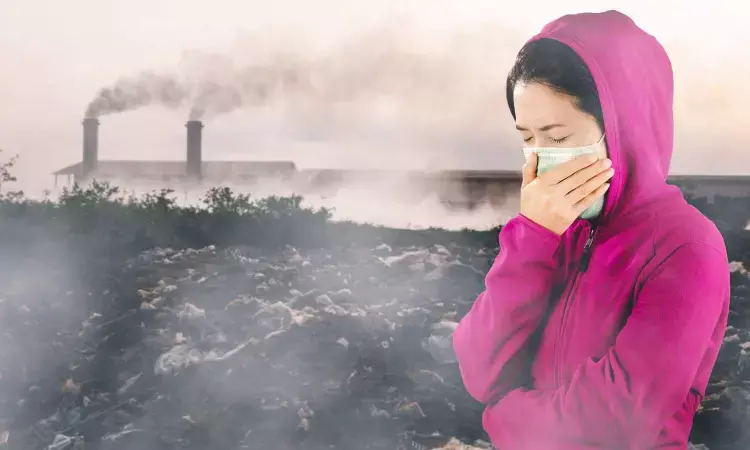- Home
- Medical news & Guidelines
- Anesthesiology
- Cardiology and CTVS
- Critical Care
- Dentistry
- Dermatology
- Diabetes and Endocrinology
- ENT
- Gastroenterology
- Medicine
- Nephrology
- Neurology
- Obstretics-Gynaecology
- Oncology
- Ophthalmology
- Orthopaedics
- Pediatrics-Neonatology
- Psychiatry
- Pulmonology
- Radiology
- Surgery
- Urology
- Laboratory Medicine
- Diet
- Nursing
- Paramedical
- Physiotherapy
- Health news
- Fact Check
- Bone Health Fact Check
- Brain Health Fact Check
- Cancer Related Fact Check
- Child Care Fact Check
- Dental and oral health fact check
- Diabetes and metabolic health fact check
- Diet and Nutrition Fact Check
- Eye and ENT Care Fact Check
- Fitness fact check
- Gut health fact check
- Heart health fact check
- Kidney health fact check
- Medical education fact check
- Men's health fact check
- Respiratory fact check
- Skin and hair care fact check
- Vaccine and Immunization fact check
- Women's health fact check
- AYUSH
- State News
- Andaman and Nicobar Islands
- Andhra Pradesh
- Arunachal Pradesh
- Assam
- Bihar
- Chandigarh
- Chattisgarh
- Dadra and Nagar Haveli
- Daman and Diu
- Delhi
- Goa
- Gujarat
- Haryana
- Himachal Pradesh
- Jammu & Kashmir
- Jharkhand
- Karnataka
- Kerala
- Ladakh
- Lakshadweep
- Madhya Pradesh
- Maharashtra
- Manipur
- Meghalaya
- Mizoram
- Nagaland
- Odisha
- Puducherry
- Punjab
- Rajasthan
- Sikkim
- Tamil Nadu
- Telangana
- Tripura
- Uttar Pradesh
- Uttrakhand
- West Bengal
- Medical Education
- Industry
Even Short-Term Exposure to Air Pollution Linked to Increased Mortality Rates: JAMA

While the association between air pollution and mortality is well-documented, few studies have utilized causal modeling approaches to comprehensively account for spatiotemporal confounders. A recent cross-sectional study aimed to estimate the relationship between short-term changes in fine particulate matter (PM2.5) and nitrogen dioxide (NO2) concentrations and daily all-cause mortality rates across four regions. This study was published in JAMA Network Open by Yiqun and colleagues.
Air pollution, particularly PM2.5 and NO2, poses significant health risks, including increased mortality rates. However, accurately estimating the impact of air pollution on mortality requires addressing confounding factors that vary across time and space. Causal modeling approaches offer a method to address these challenges and provide more precise estimates of the association between air pollution exposure and mortality.
The study analyzed air pollution and mortality data from Jiangsu, China; California; central-southern Italy; and Germany from 2015 to 2019. A total of 8,963,352 deaths were included in the analysis. Interactive fixed-effects models were used to control for both measured and unmeasured spatiotemporal confounders.
Key Findings:
A 10-μg/m3 increase in daily PM2.5 concentration was associated with an increase in daily all-cause deaths per 100,000 people ranging from 0.01 to 0.10 across the four regions.
Similarly, a 10-μg/m3 increase in NO2 concentration was associated with increases in mortality rates ranging from 0.03 to 0.10 across the regions.
Significant effect modifications by age, sex, and urbanity were observed in different regions, highlighting the complex interplay between air pollution exposure and demographic factors.
The study's findings reinforce the link between short-term exposure to PM2.5 and NO2 and increased mortality rates across diverse geographical regions. Utilizing causal modeling approaches, the study provides robust estimates while accounting for unmeasured spatiotemporal confounders.
These findings underscore the importance of implementing policies to mitigate air pollution and protect public health. Further research is warranted to elucidate the mechanisms underlying the observed associations and inform targeted interventions to reduce air pollution-related mortality.
Reference:
Ma, Y., Nobile, F., Marb, A., Dubrow, R., Stafoggia, M., Breitner, S., Kinney, P. L., & Chen, K. Short-term exposure to fine particulate matter and nitrogen dioxide and mortality in 4 countries. JAMA Network Open,2024;7(3):e2354607. https://doi.org/10.1001/jamanetworkopen.2023.54607
Dr Riya Dave has completed dentistry from Gujarat University in 2022. She is a dentist and accomplished medical and scientific writer known for her commitment to bridging the gap between clinical expertise and accessible healthcare information. She has been actively involved in writing blogs related to health and wellness.
Dr Kamal Kant Kohli-MBBS, DTCD- a chest specialist with more than 30 years of practice and a flair for writing clinical articles, Dr Kamal Kant Kohli joined Medical Dialogues as a Chief Editor of Medical News. Besides writing articles, as an editor, he proofreads and verifies all the medical content published on Medical Dialogues including those coming from journals, studies,medical conferences,guidelines etc. Email: drkohli@medicaldialogues.in. Contact no. 011-43720751


